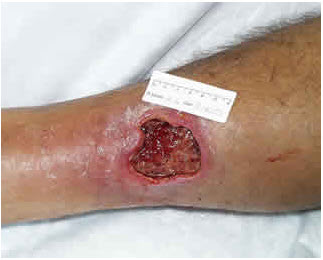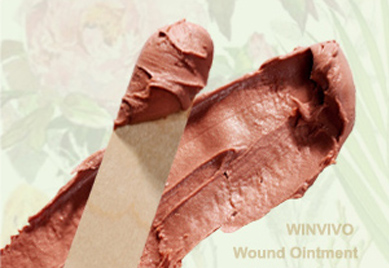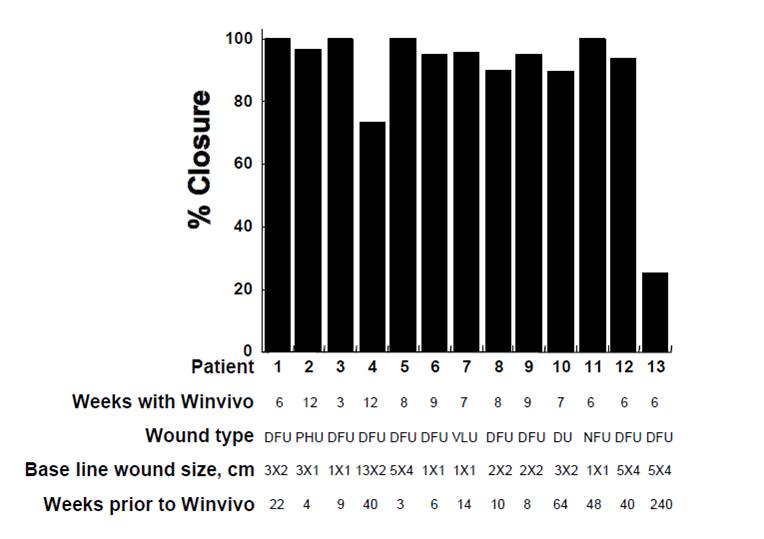Chronic Wounds

"Healing is a matter of time, but it is sometimes also a matter of opportunity." - Hippocrates, 5th Century B.C.
Chronic wounds (or skin ulcers) account for approximately 6 million skin wounds in the United States and 37 million skin wounds globally. Pressure ulcer wounds account for the largest portion of these figures with an estimated 2.5 million each year in the United States and 9 million around the world. This is primarily due to an aging population and the increasing number of elderly that have debilitating disorders that restrict movement or provide an impetus for skin breakdown.
Diabetic ulcers are an area of increasing concern with the rising incidence and prevalence of diabetes around the world. More than 2.3 million Americans are treated for a diabetes related skin ulcer each year and approximately 20 million diabetics experience these ulcers annually. It is estimated that up to 25% of all diabetics will develop a diabetic foot ulcer and about 12-24% of these patients eventually will undergo lower extremity amputations as a result of infection or gangrene secondary to unhealed foot ulcers. Unfortunately, the 5-year survival rate after one major lower extremity amputation is only about 50%. Once amputation occurs, 50% of patients will develop an ulcer in the other limb within 5 years.
Between 500,000 and 800,000 Americans are affected by venous leg ulcers annually. In the United States alone, venous ulcers cause the loss of 2 million working days and incur treatment costs of approximately $3 billion per year. Across the world, venous ulcerations create an enormous economic burden. This is because of the chronicity of these ulcers, the nursing time required to manage them, and the dressing and bandage costs over a long period of time. The patients in addition suffer from poor quality of life as a result of pain, malodor, and reduced mobility. Moreover, once healed, up to one-third of treated patients experience four or more episodes of recurrence.
Compared to acute wounds, chronic wounds represent a greater medical challenge due to various complicating factors. A chronic wound is defined as a break in the skin of long duration (>6 weeks) or frequent reoccurrence.
A myriad of factors can delay wound healing, such as:
- Chronic diseases
- Vascular insufficiency
- Diabetes
- Neurological defects
- Nutritional deficiency
- Advanced age
- Local factors such as pressure, infection and edema
- Patient’s resistance to life style modification (e.g., quit smoking, adopt a healthy diet and exercise regimen, and maintain a healthy weight)
Common chronic wounds include:
- Venous ulcers
- Arterial ulcers
- Diabetic foot ulcers
- Pressure ulcers
- Skin ulcers caused by vasculitis
- Skin ulcers caused by rhumatoid arthritis
- Skin ulcers caused by pyoderma ganrenosum
- Non-Healing surgical & traumatic wounds
Over the past 2 decades significant progress has been made in the development of a wide variety of advanced wound care modalities in managing acute and chronic wounds. However, complete healing of chronic wounds such as diabetic foot ulcers and venous leg ulcers remains a challenge due to many factors such as:
- Prolonged inflammation that stalls wound healing
- Excessive wound drainage and formation of eschar and bacterial biofilms that are resistant to antibiotic treatment
- Poor blood circulation (ischemia)
- Poorly controlled blood glucose level (hyperglycemia)
- Weakened barrier function (due to aging or use of steroids) rendering the skin susceptible to tears and the subsequent development of infection
- Compromised immunity due to diseases and malnutrition
- Constant weight bearing over abnormal bony prominences and/or pressure points
To address these complex issues of wound healing, one may take a "cocktail" approach and consider using a multi-functional topical therapy ideally involving:
- Ingredients with broad-spectrum anti-microbial properties to protect wound bed from infection and to inhibit growth of microorganisms without harming delicate regenerating tissue;
- Naturally anti-inflammatory and analgesic ingredients to suppress prolonged inflammation and pain;
- Ingredients that promote microcirculation of the low extremities to allow fast drainage and tissue regeneration;
- Formulation that is able to absorb wound fluid (exudate) and remove antibiotic-resistant biofilms, and yet maintain a physiologically moist wound healing environment without causing maceration
- Formulation that allows painless and less frequent dressing change; and
- Formulation that can heal wound fast and effectively with maximum restoration of skin function and minimal scarring.
Note:
Please be advised that the information presented above is not to be used as a substitute for medical advice, diagnosis or treatment of any disease. Statements made about products have not been evaluated by the Food and Drug Administration. Viewers should not rely solely on the information provided on this web site for their own health problems, and are advised to consult with their physicians or other healthcare providers.
WINVIVO Wound Ointment:
Multi-Functional Botanical Therapy
Clinical Studies
- Difficult-to-Heal Wounds
Clinical Case Reports
- Cases #1A-6A
- Cases #1B-8B
- Cases #1C-7C
- Cases #1D-4D
- Cases #1E-2E
- Cases #1F-6F
- Cases #1G-5G
- Case #1H
- Case Series #1I
- Case Series #1J
Privacy Policy | Disclaimer | Return Policy | Contact Us
© 2009-2021 WinVivo Corporation All Rights Reserved




